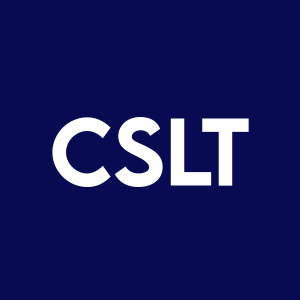New healthcare utilization study during pandemic shutdown paints challenging outlook for U.S. workforce health and productivity
Castlight Health (CSLT) announced a comprehensive study revealing a dramatic decline in healthcare utilization during the COVID-19 pandemic. Coverage showed a 23% decline in March and 52% in April 2020, particularly in preventive care, such as a 70% drop in colonoscopies and a 67% decrease in mammograms. While telemedicine usage surged over 4,000%, a significant number of primary care needs went unmet. The study emphasizes the risks to employee health and productivity, indicating potential downstream effects on healthcare costs due to delayed diagnoses.
- Significant increase of over 1,024% in telemedicine utilization in March 2020, reaching over 4,081% in April 2020.
- 23% decline in healthcare utilization in March 2020 and 52% in April 2020.
- 70% decrease in colonoscopies and 67% decrease in mammograms.
- More than 40% decline in office visits, indicating unmet primary care needs.
SAN FRANCISCO, Nov. 5, 2020 /PRNewswire/ -- Castlight Health, Inc. (NYSE: CSLT), a leading healthcare navigation platform, today announced the results of the first comprehensive study of overall healthcare utilization and deferred care for the self-insured employer market during the COVID-19 shutdown. The new study was published in JAMA Network Open, with key findings on the impact of the COVID-19 pandemic on healthcare utilization including deferred care, telemedicine, and racial and income disparities.
Overall healthcare utilization by covered employees declined 23 percent in March 2020, and 52 percent in April 2020, with large reductions of nearly 70 percent in preventative care for top chronic health conditions including cancer screenings and routine disease management. Deferred care for patients aged 46 to 64 during March and April 2020 is of particular concern, including:
70% decrease in colonoscopies67% decrease in mammograms51% decrease in HbA1c diabetes testing
According to the Centers for Disease Control (CDC), chronic diseases are the leading cause of death and disability in the U.S. The CDC projects cancer to be the second-leading cause of death in the U.S. in 2020, followed by COVID-19-related morbidities.
"Managing complex health conditions is challenging even in the best of times," said Dr. Dena Bravata, co-author of the study and chief medical officer at Castlight Health. "However, the rate of deferred care that we have documented is alarming, not only in terms of the risks to patients but also to the companies who employ them. Telehealth is helping some populations get the care they need, but is not being utilized by many of the most vulnerable."
During the early phase of the pandemic shutdown, the study observed patients selecting alternative and safer means to getting care. The study found dramatic increases in the use of telemedicine, with an increase of more than 1,024 percent during March and skyrocketing to more than 4,081 percent by April. While this use of telemedicine was significant, the increase was offset by a more than 40 percent decline in office visits, leading to a conclusion that many primary care needs were likely unmet during the early days of the pandemic. This finding is significant in that delayed primary care visits will have a downstream effect on potentially increasing health care costs for undiagnosed conditions.
The study evaluated healthcare utilization by geography, race, and income. The study found that less of the deferred care was offset by telehealth services for populations living in zip codes with average incomes below 200 percent of the Federal Poverty Level (FPL) or those with 80 percent of the population reported as non-white.
"The significant reduction in utilization of preventive healthcare services will have downstream effects on the health of employees," said Maeve O'Meara, chief executive officer of Castlight Health. "To mitigate the future impact on workforce health and productivity, employers can leverage digital and high-touch solutions to navigate employees to high-value care."
The study is based on health insurance claims data from 2018 to 2020 collected by Castlight Health. Castlight aggregates medical and pharmaceutical claims from self-insured employers and health plans that purchase access to Castlight's transparency tools and benefits platform. Approximately 200 employers with employees in all 50 U.S. states contributed data, representing several industries, varying from 500 to 500,000 employees.
Other authors of the study include Christopher Whaley and Jonathan Cantor of the RAND Corporation, Dr. Neeraj Sood of the Sol Price School of Public Policy, Schaeffer Center at the University of Southern California, the National Bureau of Economic Research, and the Center for Primary Care and Outcomes Research at Stanford Medicine.
About Castlight Health
Castlight is on a mission to make it as easy as humanly possible for people to navigate the healthcare system and live happier, healthier, more productive lives. Our health navigation platform connects hundreds of health vendors, benefits resources, and plan designs into one comprehensive health and wellbeing experience. We guide individuals—based on their unique profile—to the best resources available to them, whether they are healthy, chronically ill, or actively seeking medical care. Castlight transforms employee benefits into a deeply personalized, yet simple, guided experience, empowering better-informed patient decisions to unlock better healthcare outcomes and maximizing return on healthcare investments.
For more information visit www.castlighthealth.com. Follow us on Twitter and LinkedIn and like us on Facebook.
Media Contacts:
Caroline Kawashima
Director, Corporate Marketing
Castlight Health
press@castlighthealth.com
Saige Smith
Castlight Health
press@castlighthealth.com
![]() View original content to download multimedia:http://www.prnewswire.com/news-releases/new-healthcare-utilization-study-during-pandemic-shutdown-paints-challenging-outlook-for-us-workforce-health-and-productivity-301166743.html
View original content to download multimedia:http://www.prnewswire.com/news-releases/new-healthcare-utilization-study-during-pandemic-shutdown-paints-challenging-outlook-for-us-workforce-health-and-productivity-301166743.html
SOURCE Castlight Health, Inc.
FAQ
What were the key findings of the Castlight Health study on COVID-19's impact on healthcare utilization?
How did telemedicine usage change during the pandemic according to Castlight Health?
What were the implications of deferred care as reported by Castlight Health?








